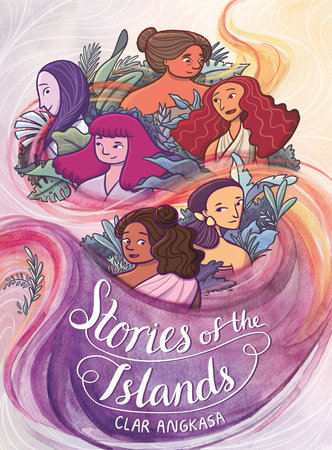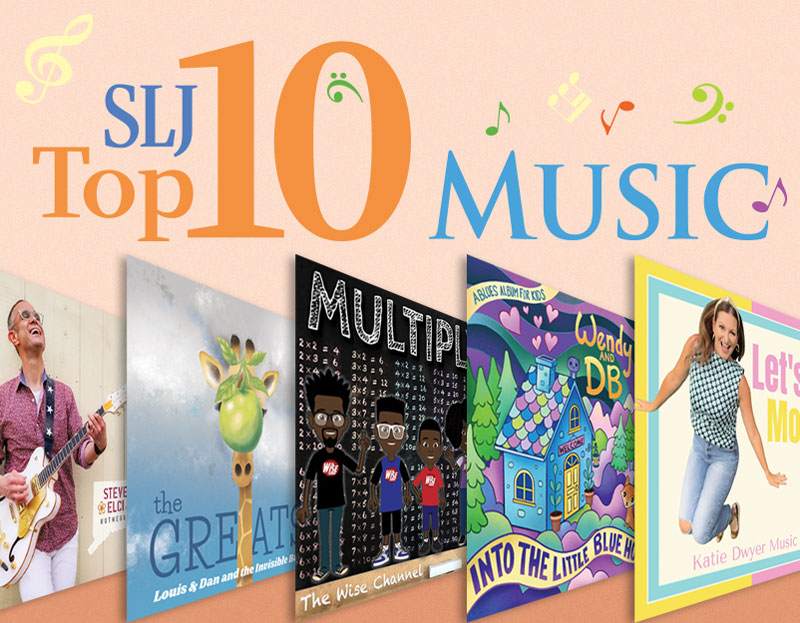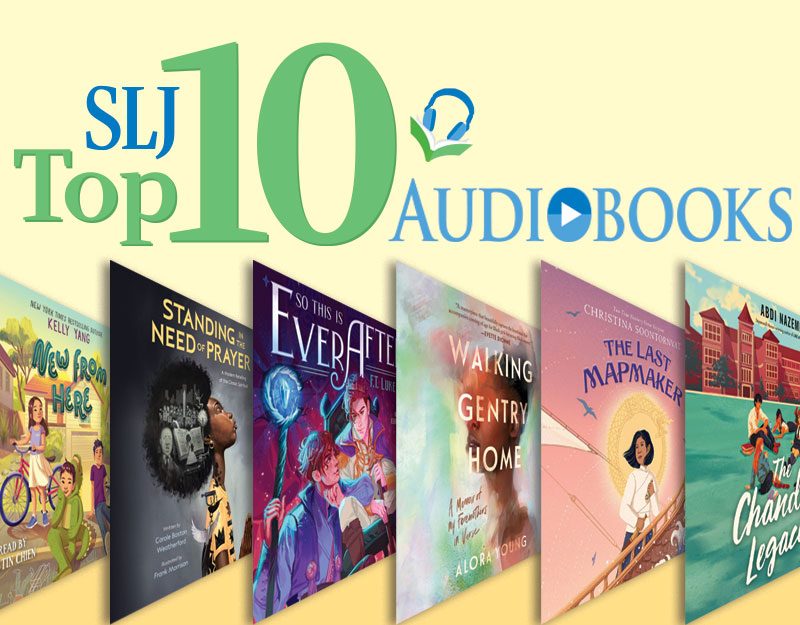Review of the Day: Stories of the Islands by Clar Angkasa

Stories of the Islands
By Clar Angkasa
Holiday House
$22.99
ISBN: 9780823449781
On shelves October 31st
There was a time, oh best beloved, when fairytales and works of folklore ruled children’s libraries across America. It was an era before the big box bookstores, long before the internet, when librarians set the tone for what would and wouldn’t sell in the world of children’s literature. Back then, if you wanted to look at world cultures, fairytales and folktales were your one and only way of doing so. Even then, few distinguished between the tales told by white people about other cultures and tales told by people from those cultures themselves. These days, folktales have long since fallen out of favor in the publishing industry. And gone is the time when librarians became sticklers for “original” rather than fractured or rewritten versions of classic tales. These days, if you’d like to rewrite a story, you are fully within your rights to do so. After all, isn’t that how folktales began in the first place? Told from person to person over time, until they morphed and changed to fit a variety of cultures? Much of this was in my head as I read Clar Angkasa’s reworking of three Indonesian folktales from her childhood. In her hands, the stories “Keong Mas”, “Bawang Merah Bawang Putih”, and “Timun Mas” take on new life for a new era of readers in this clever collection. And as I’ve said many times before, if folktales and fairytales are to remain pertinent, it’s entirely possible that adapting them into the graphic novel format is the perfect way to make that happen.
Three traditional Indonesian folktales. Three ways of looking at the world. Three entirely new interpretations. Clar Angkasa asks us, “Who are these women beyond the hero’s love interest? What are their hopes and dreams outside of what’s expected of them? Why are they waiting for their saviors instead of just saving themselves.” Stories of the Islands is her answer. Three tales are selected in total. In the first, “Keong Mas” a proud princess is turned into a snail and can only save herself if she truly wishes to save others. “Bawang Merah Bawang Putih” is different, following the travails of a pair of adopted sisters and the beloved father who becomes their enemy. Finally “Timun Mas” is the story of a woman who unexpectedly becomes a mother and must outwit the giant that would take what she holds most dear. Playing off of the original tales, Angkasa reworks these old stories, while still retaining the elements that have made them memorable favorites for so many years.
ADVERTISEMENT
ADVERTISEMENT
In her Author’s Note at the end of the book, Clar Angkasa offers what I can only call a bit of an explanation about what you’ve just read. She tells us that she was raised by a badass single mom and that that experience gave her “a strong distaste for narratives that perpetuate the concept that a woman is limited to what society expects of them.” How then to come to grips with the traditional Indonesian folk tales she grew up with? Simple. Rewrite them. As such, she plucked the three tales she knew best and found ways to make them just a bit different. And folktale purists (for no matter the form of art, you will find a purist lurking in its shadows) will no doubt take issue with the changes. What made me happy, though, was how Angkasa owns up to what she’s done. Not only does she include an Author’s Note with her thoughts on the subject of changing folktales, she also writes out the three stories in their original forms at the back of the book so that kids can compare and contrast. Which do you prefer? Why? Why did the creator of this book make the changes that she did? Should she have changed more? Less? Explain!
This year, the same year that Angkasa releases Stories of the Islands, a different publisher is releasing a very different adapted folktale. Jon Klassen’s The Skull is a Tyrolean folktale. In his explanation at the end of the book, Klassen notes that it is the very nature of folktales to be changed. Historically they were oral tales, and in the telling, some details or elements would be changed and passed on. So when you change a folktale, you’re really just in keeping with the nature of storytelling itself. I take heart in this. I look at the old collections of fairytales and folktales in children’s libraries across the country, and I think how people are still telling those tales. They may adapt them to modern times so that kids today better understand them, but their ultimate purpose, to tell a good tale, remains intact. They may not remain the stories we remember from our youth, but if we open ourselves up to the possibility that they might be even better, we allow our kids to take part in a tradition as old as human speech.
All right. Back up a bit. I’m going to nerd out on some stuff, so you can take a breather, if you so choose. There are three different stories in this book, right? And each, to varying degrees, has been changed for a contemporary audience. So how did Clar Angkasa and her editor decide on the order of these stories? You see, the flow of this reading is very important. You need to lure the audience in with the first story. Do something too bold and forthright and you run the risk of alienating your audience. Do something too calm and thoughtful and you’ve the same result. So Angkasa needed to make that first story the most appealing of the three. She went with “Keong Mas” the story of the princess turned into a snail, which I feel was a rather bold choice. Her telling of this story plays with time frames. When the tale starts all you know is that someone is trapped in the form of a snail. The flashback sequence that follows is made up of muted colors, but Angkasa doles out the information of how our princess ended up in her spiral prison in fits and starts. What, in another author’s hands, would have been a linear telling from point A to point B appears here as a story that kids almost have to decode and decipher. Had I been writing this book, I don’t know that I would have started with something this intricate. Still, in retrospect it makes sense. The stakes are low in “Keong Mas” whereas in “Bawang Merah, Bawang Putih” the two main characters’ lives are at stake and in the final story “Timun Mas” there’s a giant to defeat. The tales increase in excitement and danger as you read. “Keong Mas” is still, I think, the most ambitious of the three tellings, but a dedicated reader will be able to figure out what’s happening. Absolutely.
As for the art itself, it’s magnificently appealing. I’m not well-versed enough in the terminology of early 21st century graphic novels for kids to be able to give a name to precisely the kind of clear cut art that Angkasa is employing here. It owes a bit of itself to Raina Telgemeier, but the sheer beauty of the watercolors being utilized on the pages are unique. What I can call it, without doubting myself, is engaging. Since this is aimed at an 8-12 year-old readership, this acts as a kind of gateway comic for kids who may be less comfortable with some of the more ambitious GNs out there. The layouts of the panels, along with Angkasa’s storytelling methodology, are straightforward. While I might have had to clarify which princess was which in the first story, kids should have no problem. Plus there are some particularly keen artistic flourishes at work, if you look for them. The giant of “Keong Mas”, which is rendered as more of a shadow person than a minutely delineated character, is a perfect villain precisely because it hasn’t any clear features at all. Sometimes when I read a comic, I’ve no idea if the creator thought every detail through. With Stories of the Islands I never had a doubt.
Of the three tales, “Timun Mas” (a.k.a. “Golden Cucumber”) is the most similar to its original story. In both the old and the new, a woman and her daughter outwit a giant and return to one another at the end. The difference is that in the original the mother goes to a dukun for the solution to her problems. Here, the women figure out what to do on their own. I suppose that’s a perfect capper for this book, and a perfect explanation as to why the author/artist made the changes that she did. Passive protagonists are hard to root for, so in each one of these stories the woman or girl being put upon has a moment where she has to take her life into her own hands, make her own decisions, and set off on paths unknown. Our old folktales can contain many outdated ideas and notions, but dig a little deeper and you’ll find that there’s something about them that carries on and prevails, year after year, century after century. It’s just a matter of reworking them into tales we can be proud to share with our own kids. A marvelous example of bringing the old and the new together to create something that contains the best of both worlds. A beautiful potential future for folktales worldwide.
On shelves October 31st
Source: Galley sent from publisher for review.
Filed under: Best Books, Best Books of 2023, Reviews, Reviews 2023
About Betsy Bird
Betsy Bird is currently the Collection Development Manager of the Evanston Public Library system and a former Materials Specialist for New York Public Library. She has served on Newbery, written for Horn Book, and has done other lovely little things that she'd love to tell you about but that she's sure you'd find more interesting to hear of in person. Her opinions are her own and do not reflect those of EPL, SLJ, or any of the other acronyms you might be able to name. Follow her on Twitter: @fuseeight.
ADVERTISEMENT
ADVERTISEMENT
SLJ Blog Network
One Star Review, Guess Who? (#211)
Kevin McCloskey on ‘Lefty’ | Review and Drawn Response
Notable NON-Newbery Winners: Waiting for Gold?
The Seven Bills That Will Safeguard the Future of School Librarianship
Take Five: Newbery Picks, Part Two
Gayle Forman Visits The Yarn!
ADVERTISEMENT







